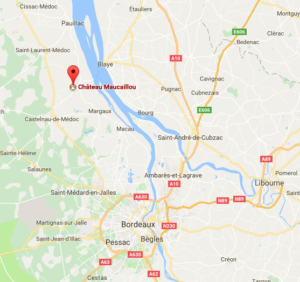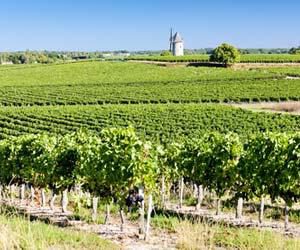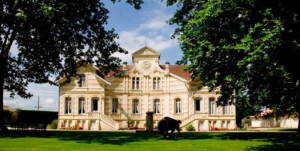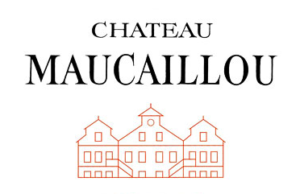
History
In 1875, the year of his marriage, J. Petit-Laroche offered his wife the construction of a fine residence opposite his Médoc cellars as a wedding gift. The result was the Chtaeau as we know it today. The Chateau MAUCAILLOU building is listed in the “BORDEAUX CHÂTEAUX” inventory collection. At the same time, J. Petit-Laroche created a new wine estate in the localities known as “MAUCAILLOU” and “CAUBET”, with an area of one and a half hectares, named Chateau MAUCAILLOU. “MAUCAILLOU” means “mauvais cailloux”, the French for bad stone, as the term was understood by the farmers of the middle ages, given that this type of gravel plot was not suitable for growing cereal, the main source of livelihood at the time. It was later discovered that such gravel outcrops constituted an ideal terroir for highly expressive vineyards.
In 1929, Roger and André DOURTHE purchased CAVES ET ENTREPOTS DE MOULIS (Moulis Cellars and Warehouses), located next to the railway station at Moulis-en-Médoc, to ensure easier shipment of wines throughout France and Europe. They concomitantly became the owners of Chateau MAUCAILLOU (2.5 hectares, with half of the vineyard in red varieties and the other half in white varieties). In 2006, Pascal DOURTHE became the manager of Chateau MAUCAILLOU, supported by his two sisters, Caroline and Magali.

The Terroir
The MOULIS vineyard is the oldest in the Médoc, with traces found in title deeds dating back to the 15th and 16th centuries. The terroirs on which the 63 hectares of Château MAUCAILLOU vineyards grow consist of fine quaternary alluvium outcrops, a large part of which stems from the Güntz Garonne gravel stratum, at the origin of the Great Classified Crus of the Médoc. This gravel, with its big shiny stones, reflects the rays of the summer sun onto the grapes, thereby enhancing their perfect ripeness, an essential condition for the birth of a great wine.
Grape varieties : 50% Cabernet Sauvignon, 41% Merlot, 7% Petit Verdot, 2% Cabernet Franc
The harvest is often mixed, partly by hand and partly by machine, depending on plots, plant health and weather conditions. The grapes are first sorted in the vineyard. The harvest is then taken to the fermentation cellar in small bins to avoid crushing the grapes during transport.
Vinification
Vinification is carefully undertaken under the watchful eye of Philippe DOURTHE, graduate oenologist, in two modern vat rooms equipped with state-of-the-art technology. The vat room, in stainless steel, is entirely thermoregulated in order to apply the specific method that Philippe DOURTHE developed in 1982. It consists of vinifying at relatively low temperature over the first few days, in order to extract the quintessence of the fruit aromas of the grape, then, at the end of fermentation, letting the temperature rise to extract the finest tannins and the colour.
At MAUCAILLOU, malolactic fermentation follows immediately after alcoholic fermentation.
Château Maucaillou wines are aged in barrels for 18 to 20 months.
 In keeping with the finest tradition, nowadays respected in only the very greatest growths, the wines are aged in carefully selected new oak barrels. Philippe DOURTHE wrote his oenology thesis on the origin and characteristics of oak in the world. It is also one of his passions.
In keeping with the finest tradition, nowadays respected in only the very greatest growths, the wines are aged in carefully selected new oak barrels. Philippe DOURTHE wrote his oenology thesis on the origin and characteristics of oak in the world. It is also one of his passions.
50 to 75% of the barrels are replaced by new oak for each harvest, depending on the vintage and on its capacity to handle more or less tannins from new oak of essentially French origin. Two large and fully insulated barrel ageing cellars, with a total capacity of 3,500 barrels, safely keep the first-year harvest, on the one hand, and the second-year harvest, on the other hand. During the two years of ageing, the wines are regularly racked, then fined with egg whites to ensure perfect clarity.
The average production of each harvest is 27,000 cases (324,000 bottles) of the first wine, and 9,000 cases (102,000 bottles) of the second wine (N°2 de MAUCAILLOU).

Château Maucaillou Moulis-en-Médoc
Production Area: 87 hectares
Soil: 80% Güntz gravel, 20% Clay-limestone
Average Age of the Vines: 30 years old
Varietal Blend: 52% Cabernet Sauvignon, 41% Merlot, 7% Petit Verdot
Annual Production: 27,000 cases
Aging: Aged in 40-75% new wood barrels for approximately 18 months
Tasting Notes: Fresh and floral with aromas of orange sorbet infused with red fruit. On the palate, the tannins are supple; very good structure with a long, virile finish.

N°2 de Maucaillou
Overview: The second wine of Château Maucaillou is produced from the same fine terroir as the first wine.
Vinification: Following stringent sortings the N°2 de Maucaillou is aged by Philippe Dourthe with the same painstaking and watchful care as is devoted to the 1st wine.
Tasting Notes: Charming, drinkable, generously fruited, round, and fleshy with a long finish and silky tannins.
Average Annual Production: 108,000 bottles
Cellaring Potential: 5-10 years
Serving Temperature: 16-18°C
Food Pairings: Grilled red meat, duck

Le Haut-Médoc de Maucaillou
Owners: Sarl Chateau Maucaillou – Famille Dourthe
Soil: 76% Guntz gravels, 24% Clayey limestone
Production Area: 13 hectares
Grape Varieties: 60% Cabernet Sauvignon, 24% Merlot, 16% Cabernet Franc
Plant Density: 7,000 vines/ha
Average Age of the Vines: 25 years
Harvest: 100% harvested mechanically with sorting in the cellars
Vinification: Fully temperature-controlled vat room. Vinification done according to grape variety and quality of the harvest. Traditional vinification with a pre-fermentation maceration at 22 degrees, then daily pumping-over of the vat during alcoholic fermentation. Fermentation temperature controlled between 26 and 28 degrees Celsius. Devatting takes place on average 3 weeks after the beginning of alcoholic fermentation.
Aging: Aging of the lots in barrels for a minimum of 18 months. Filtration done with egg whites. Bottling on premises.
Annual Production: Approx. 70,000 bottles



